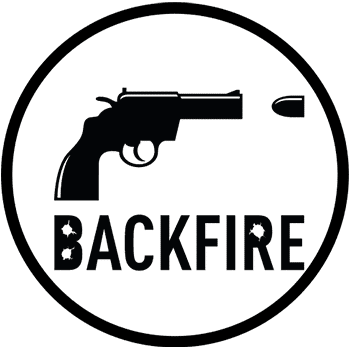15 Best Rifle Scopes for Hunting in 2024
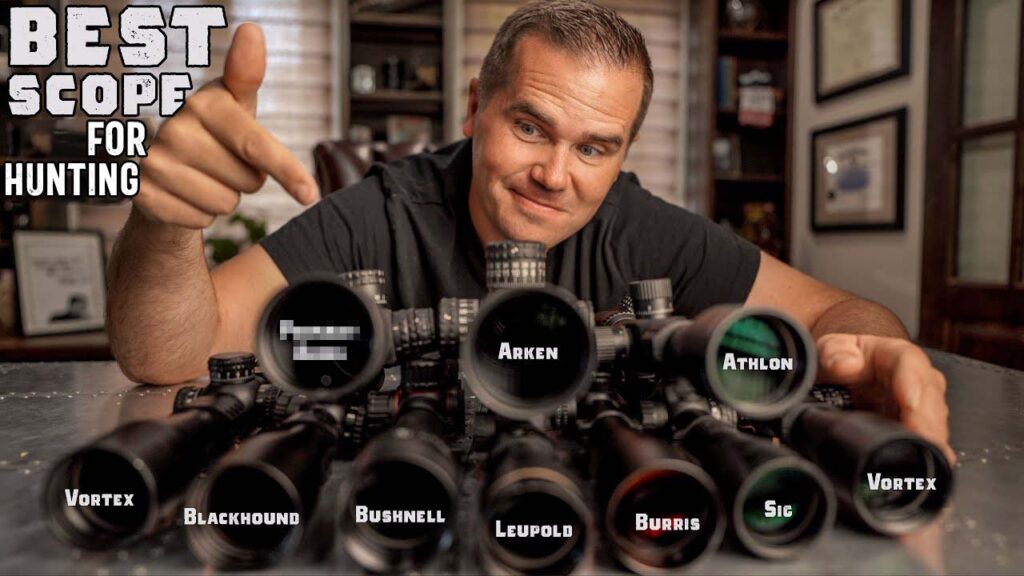
After reviewing dozens of scopes from many different companies ranging in price from $50 to well over $2,000, I am finally ready to write a completely unbiased review of my favorite scopes on the market for hunting in 2024.
If you don’t want to read this whole post, here is what I’d tell a friend to buy at each major price point.
- Under $200 – Burris Fullfield E1 4.5-14×42 (link to Amazon) or (link to Optics Planet)
- What I Like: Lightweight, easy to use, parallax adjustment, decent glass
- Under $400 – Vortex Diamondback Tactical 4-16×44 (link to Amazon) or (link to Optics Planet)
- What I Like: Perfect tracking accuracy, first focal plane, very rugged construction, warranty
- Under $500 – Burris Signature HD 3-15×44 E3 Illum. (link to Amazon) or (link to Optics Planet)
- What I Like: Good glass for the price, accurate tracking, pop-to-lock turret
- Under $750 – Element Optics Titan 3-18×50 (Buy it on Optics Planet)
- What I Like: Excellent tracking accuracy, perfect hybrid for hunting and long-range shooting
- Under $1,300 – Burris Veracity PH 4-20×50 (link to Amazon)
- What I Like: Includes an incredible LED display inside the scope that has your ballistics info so you know how far you’re dialed out for shooting. Also has an inclinometer, great glass, and more. It’s insanely good. NOTE: They just updated the Veracity PH to an improved optics system which was announced in January 2024 at Shot Show.
Why You Can Trust This Review
- I tested over 45 different scopes from 12 different brands
- I spent over 150 hours testing and reviewing the scopes
- No company has paid to have their product recommended in this review
- Because of my Youtube channel on guns, I have a reputation to uphold. I have to be sure I’m bringing you the best, unbiased content.
If You Want a Simple, Inexpensive, Capped-Turret Scope
I’ll be frank. Some scope companies try to pass off some horrible scopes in their capped-turret category. Because tracking isn’t as important, and because many of the capped-turret scopes are inexpensive, some of the trashiest scope designs I’ve seen are on capped-turret scopes.

First, a few scopes that I do NOT think you should buy in this category. The Sig Whiskey 3 has very thick shadowing around the edges of the image that make it feel like you’re looking through PVC pipe. The (relatively expensive) Bushnell Nitro drops the distance from your eye to the scope too much as you zoom in. The Leupold VX-Freedom is a good scope, but I had issues with the reticle going out of focus and a loose rear focus piece. The Vortex Crossfire II had poor sharpness and a picky eye box.
In my opinion, there are two stand-out options for scopes in this category. The Burris Fullfield E1, and the Maven CRS2 4-16×44 SFP.
The cheaper of the two options is the Burris Fullfield E1 (link to Amazon). At less than $300, it’s a very capable scope for the price. They make versions with different options, but I’d recommend getting one with a parallax adjustment. Parallax is basically a focus knob, but it also controls the alignment of the reticle to your eye. You’ll shoot more accurately and have a better optical experience with a parallax adjustment.
The Maven CRS2 4-16×44 SFP is an amazing scope. It probably has the best glass quality of anything I’ve tried in the capped turret category. It’s very well built, is lightweight, and functions perfectly. Plus, I really like the look and styling of the turrets on the Maven scopes.
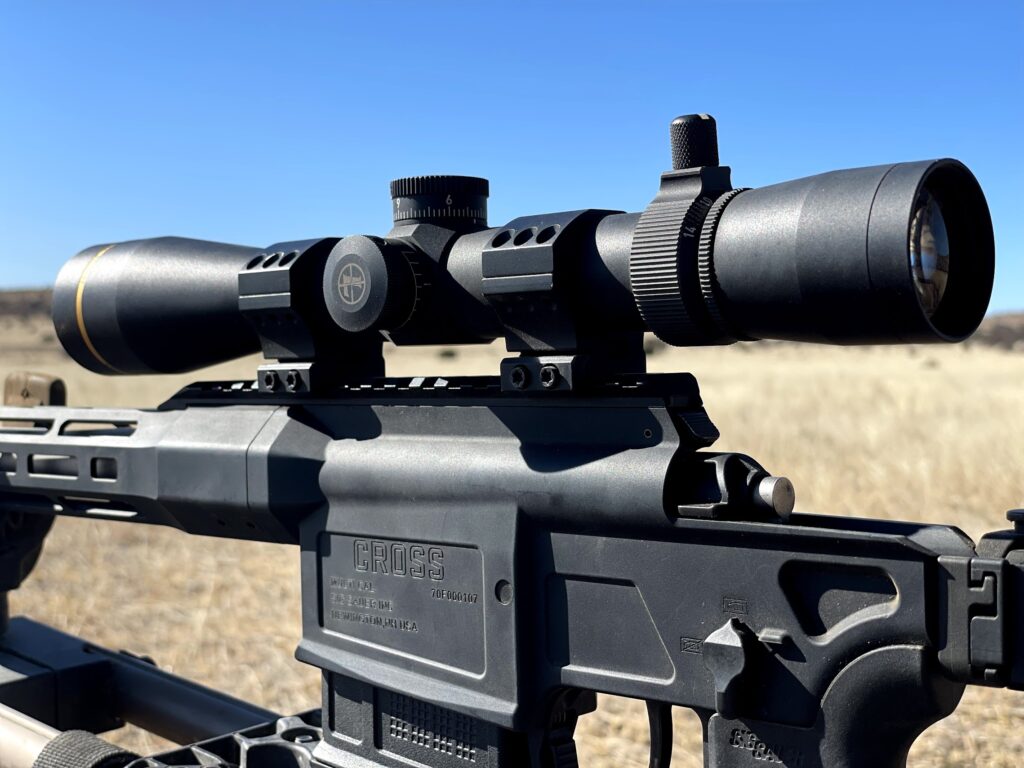
My Favorite Exposed-Turret Scopes for Hunting
When I’m buying a scope just for me and not for review, I always get an exposed turret. In my opinion, it makes the gun much more useful for a wide range of target and hunting opportunities. I’ll break this part of the blog post into sections based on price.
Here’s What I’d Get If You Have < $500 to Spend
I actually wrote an entire blog post on the best scopes under $500, and did a video on it too.
Frankly, I wouldn’t buy an exposed-turret scope under $300. Why? Because the purpose of an exposed turret is to allow you to dial for elevation, and I haven’t personally found a scope in the very cheap category that has reliable tracking and solid enough optics to recommend it. If you’re under $300, I’d get a capped-turret scope.
I tested several exposed-turret first-focal-plane scopes under $500 recently. Here are some of their specs.
| Model | Focal Plane | Weight (Ounces) | Tube Size | Illumination | Where It’s Made |
| Vortex Diamondback Tactical 4-16×44 | First | 22.85 | 30mm | No | China |
| Athlon Talos BTR 4-14x44mm | First | 24.15 | 30mm | Yes | China |
| Primary Arms SLx 3-18x50mm | First | 26.2 | 30mm | Yes | China |
| Blackhound Genesis 4-14×44 FFP MOA | First | 24.75 | 30mm | No | China |
| Arken 4-16×50 SH4 Gen2 FFP | First | 37.2 | 34mm | Yes | China |
Arken – Weeding through the list, the Arken is far too heavy for a hunting application. It’s a really cool scope for target shooting and I use one on my kid’s competition 22lr rig, but it’s just not a hunting scope. Also, I dumped all of the scopes into my pool to test water intrusion. Every scope EXCEPT the Arken passed the test. Arken called me afterward and said they are changing their gaskets in future versions of the scope to address the issue, and replaced mine.
Blackhound – I like Blackhound as a company, but I just haven’t seen any of their scopes yet that I feel beat out the competition for any specific price point. Their products lack innovation. It’s the typical scopes coming out of the same factories from Japan and China as many other manufacturers, but with no effort put into industrial design, clever turret capabilities, etc. It’s decent stuff as I highlighted in this video, but when I compare it to similarly-priced competition, I just don’t see a reason to choose the Blackhound.
Athlon – Athlon’s Talos is a very odd-looking scope because the side turrets don’t line up (similar to the Blackhound), but it’s an impressive scope nonetheless. It’s built well, but the optical quality and fit-and-finish doesn’t match the Vortex in my opinion.
Primary Arms – The Primary Arms offering is $100 more than the Vortex, but 1/3 lbs heavier and the corner sharpness didn’t match up. It’s probably the second best option in this price point in my opinion.
If You Want Made In the USA – Notice that all of the above offerings are made in China. Your only option for USA made is the Leupold VX Freedom 4-12×50 (link to Amazon). It has an exposed turret, nicely design image with little scope shadown, and decent brightness. However, my rear focus dial came loose over time and caused the reticle to go in and out of focus. I can’t recommend gear that fails on me in testing, but I’m sure my experience was rare. Overall, it’s a good choice.
The Best Option Under $500 – The first scope in the exposed-turret world that I’d recommend is the Vortex Diamondback Tactical 4-16×44 (link to Amazon). I spent a tremendous amount of time testing this scope and it tracks perfectly (at least more accurately than I was able to test). Tall target, box test, it passed every test I threw at it.
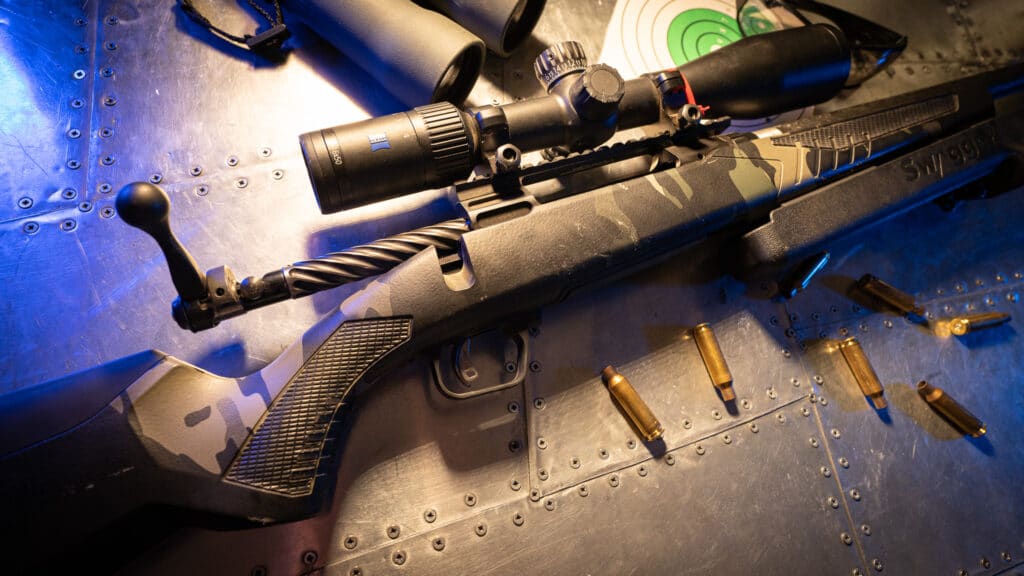
Here’s What I’d Get If You Have < $1,000 to Spend
I’ll be direct, if you can make the budget work, just get the Element Optics Titan 3-18×50 (Check current price on Optics Planet). In my opinion, it absolutely crushes the competition. I’ve personally used this sub-$800 scope to make first round impacts at 1 MILE with a 6.5 Creedmoor. In order to make a shot like that, the scope has to track PERFECTLY, and I can confirm it does.
If you’re not familiar with Element Optics, they basically started the company because so many competitors were taking cheap scope designs and putting a fancy body on them to sell for way too much. The glass quality, turret design, and reticles are very high-end in a scope that costs much less than I’d expect to see. It absolutely gets my recommendation.
The Leupold VX-3HD 4.5-14×40 (link to Amazon) is another solid option. The scope is impossibly light at just 16 ounces, but still gives you a great focal range of 4.5-14x. I’ve written before about the best scope magnifications for hunting. At 4.5mm when zoomed out, you can still shoot a big game animal at 20 yards and see enough of the animal to place a shot. At the long end, you can see a single bullet hole at 100 yards for sighting in. Perfect.
But it’s the top turret design of the Leupold VX-3HD that makes this scope so useful. Like Leupold’s higher-end scopes, it has a button on the turret to make it impossible to accidentally spin the turret without pressing the button. In that regard, it makes the scope as good as a capped-turret scope for making sure the turret doesn’t get bumped. But with a push of a button, you can take full control.
The only issues I have with the VX-3HD are: (1) I got a little ding in the front bell of the scope that was easily banged back out but I think it should be reinforced there, and (2) I wish they offered the scope in more reticles other than just basic duplex and windplex.
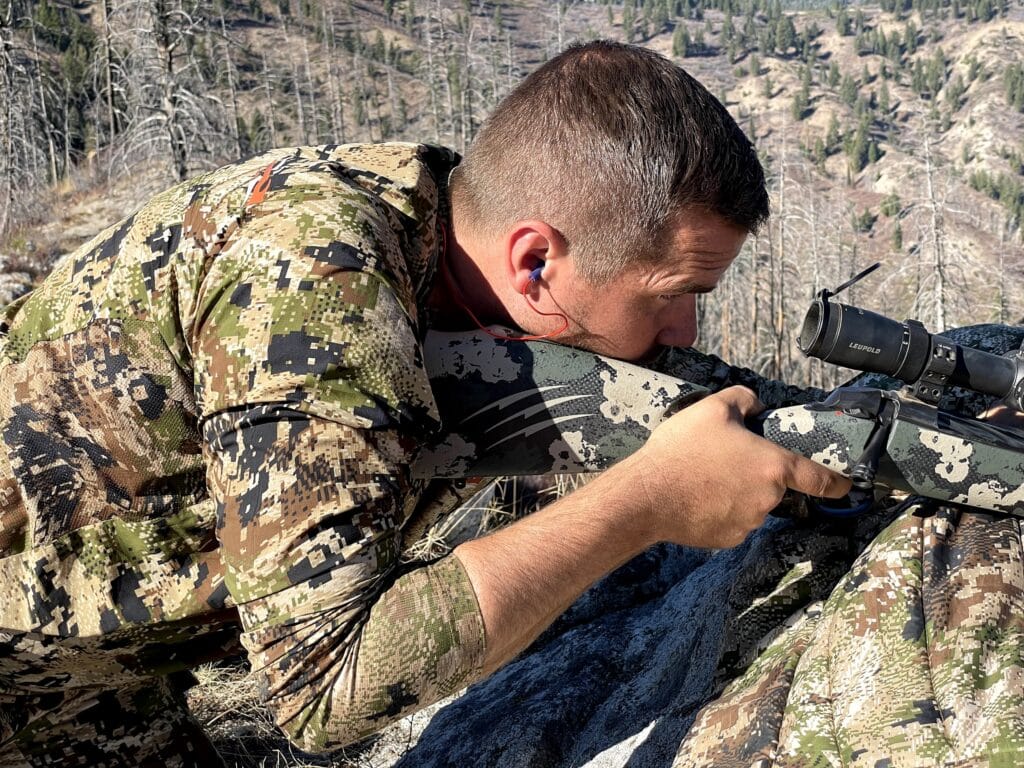
Here’s What I’d Get With > $1,000 to Spend
With a budget starting at $1,200, you can get a world-class hunting scope. In this category, it’s harder to declare a single winner because the options are all so good. However, there are about 4 stand-out scopes in this category from which you’ll likely want to choose.
In the end, I went with the Vortex Razor HD LHT 4.5-22×50 FFP (link to see price on Amazon) for my lightweight mountain rifle. It has equally good glass as the Leupold. It has great reticle options like the Leupold. Personally, I prefer the focal range of 4.5-22x compared to the Leupold’s 3.6-18x. Having 22x power is sometimes really useful when at the range to see a group on paper, or to closely inspect a buck before squeezing the trigger. For the style of hunting I usually do, rarely are shots within 50 yards, so I don’t mind the bottom magnification of 4.5x.
Another popular option is the Leupold Mark 5HD 3.6-18X44 M5C3 FFP TMR; HOWEVER, it’s 5 oz heavier than the Vortex Razor LHT, so I picked the Vortex for my lightweight hunting rifle. The Leupold is a very convenient focal range for hunting, it’s first focal-plane, provides great glass quality, great reticle options, and of course that Leupold CDS turret system that I just feel is several steps ahead of the competition. The turret allows for a positive button lock to maintain zero, and a custom dial you can order for free. There are, however, two problems with the Leupold. It’s heavy at 26oz and it uses an odd-ball 35mm tube size that makes getting rings difficult.
The Vortex Razor HD LHT beats out the Leupold in one critical area–weight. The Vortex weighs just 21.7oz compared to 26.5 on the Leupold. It doesn’t sound like much, but the Leupold feels like a CHUNK when you hold it compared to the Vortex. Also, the Vortex uses a more common 30mm tube size, so it’ll be easier to get good rings. The Vortex, however, has a magnification ring that is way too tight and requires me to come out of the scope in order to force it to where I want it to go.
As I write this, I’m torn between these two scopes. They are both so excellent that it’s difficult to pick between them. The Leupold just feels higher quality with a great turret, the Vortex is lighter with a great focal range. I can’t decide.
There are, however, still other fantastic options to choose from. Kahles makes some exceptional scopes, but all of them seem to be a few ounces heavier than the competition in my experience. The Swarovski 3.5-18×44 P BT is an awesome looking scope, but I don’t have much personal experience with it. Zeiss has a great V8 line of scopes, but none of them quite match the zoom or weight numbers I’d like to see for hunting. Zeiss’s Conquest V6 line is great.
If you prefer a second focal plane scope, the Leupold VX-6HD 3-18×50 scope with the Firedot Duplex reticle (link to check the current price on Amazon) is beyond awesome. It requires a little explanation if you are used to shooting first focal plane on higher-end scopes. The #1 problem with second focal-plane scopes is the hashmarks on the reticle are wrong unless you’re at a certain spot in the zoom range.
The Leupold VX-6HD is a second focal plane, but you can simply get a Duplex reticle so there are no hashmarks, and it has a great illuminated center “Firedot.” You’ll have to dial for windage as well as elevation, but it’s a really nice setup. I bought one for my Fierce Edge and really enjoyed the scope more than I thought I would, but in the end I decided I just prefer to dial for elevation, and hold for wind, so I decided to switch to a FFP scope.
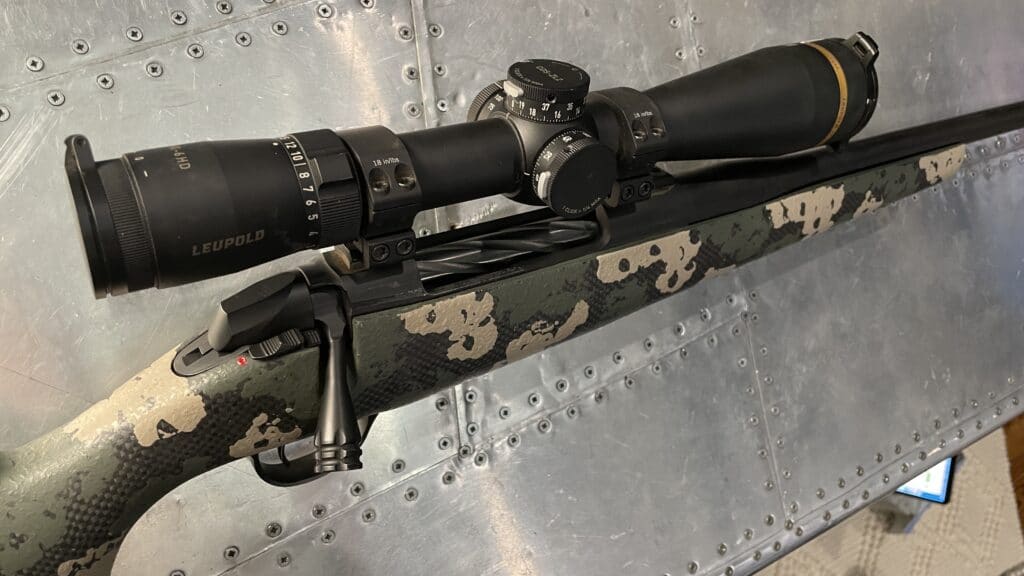
Before You Buy, Make A Few Crucial Decisions
Capped or exposed turrets?
The turrets are the dials on the top and side of the scope that allow you to adjust the scope for elevation and windage. If you will never shoot past 200 yards, there is no point in having exposed turrets. Just zero your scope, put a cap on it so it won’t get bumped, and be done.
However, many people like being able to go hunting with their rifle, and then also use the same gun to shoot long-distance at the range. An exposed turret is a huge benefit for hunting past 200 yards so you can precisely adjust the scope elevation to match the distance from your rangefinder–without first needing to remove a cap covering the turret.
The only drawback to an exposed turret is that it could get accidentally spun while hunting, which would cause you to miss. Fortunately, many scopes have turret locks, or you can simply check the scope to make sure it’s on zero before shooting. Personally, I always choose the versatility of an exposed turret, but pick what works for your needs.
First Focal Plane, or Second Focal Plane?
In a first focal plane scope, the reticle (crosshairs) gets bigger and smaller as you zoom. This makes the distance hash marks accurate no matter what you zoom to. A second focal plane scope has a fixed reticle that doesn’t grow or shrink depending on your magnification, which always makes the reticle the perfect size.
Do not get hung up on first vs second focal plane. I have a general preference for first focal plane scopes, but I own and enjoy scopes of both types. The one thing I don’t like is a second focal plane optic with a complicated reticle, because the markings will be completely off unless I keep my magnification fixed.
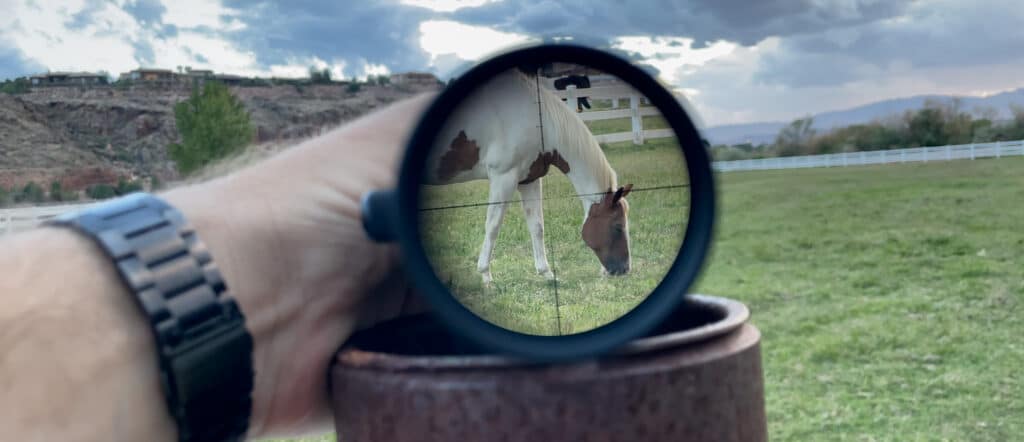
What Magnification Is Best?
I have a whole blog post on selecting the right magnification (zoom) of a scope, but I’ll give you the shortened version here.
For hunting, I like to have a wide end of less than 5x zoom. At 5x it, can be tough to see enough of the animal in the scope to know where you’re aiming at if the animal is within 30 yards. You just see hair. But even 4.5x (just 0.5x less zoom) is acceptable for me. So I like a 3, 4, or 4.5x zoom for the bottom end. 5 is too high for a versatile hunting scope in my opinion.
On the high end, I like more magnification than some other hunters who are happy with a max of 9x. Personally, I train better when I can easily see a bullet hole in paper at 100 yards. It makes sighting in and grouping MUCH easier. You can see a bullet hole at 100 yards with about 11x magnification, but it becomes comfortable at 14x.
Keep in mind, though, that unless an animal is very far away, you probably won’t need that much magnification when hunting. If you zoom in too tight on the animal, you won’t be able to see your bullet impact because of the recoil, and you may not see what happens to the animal after the shot.
What Brands of Scopes I Like, and Which I Would Avoid
I’m gonna take some serious heat in the comments for the following list, but it would have been helpful for me when I was newer to at least get a very general idea of some of the brands in the industry. Don’t put too much into this, because some models in the “good” category make a couple “fantastic” specific models even if there are other models they make that I’m less excited about.
Top-Tier Brands
- Burris
- Element
- Primary Arms
- Eotech
- Huskemaw
- Kahles
- Leupold (high-end models)
- Nightforce
- Schmidt and Bender
- Steiner
- Swarovski
- Vortex (high-end models)
- Zeiss
Good Brands
- Arken
- Athlon
- Hawke
- Maven
- Sig Sauer
- Trijicon
Brands I Wouldn’t Prefer
- Blackhound
- Bushnell
- Monstrum
- Simmons
- Tasco
- Anything that has “Sniper” in the brand or model name
